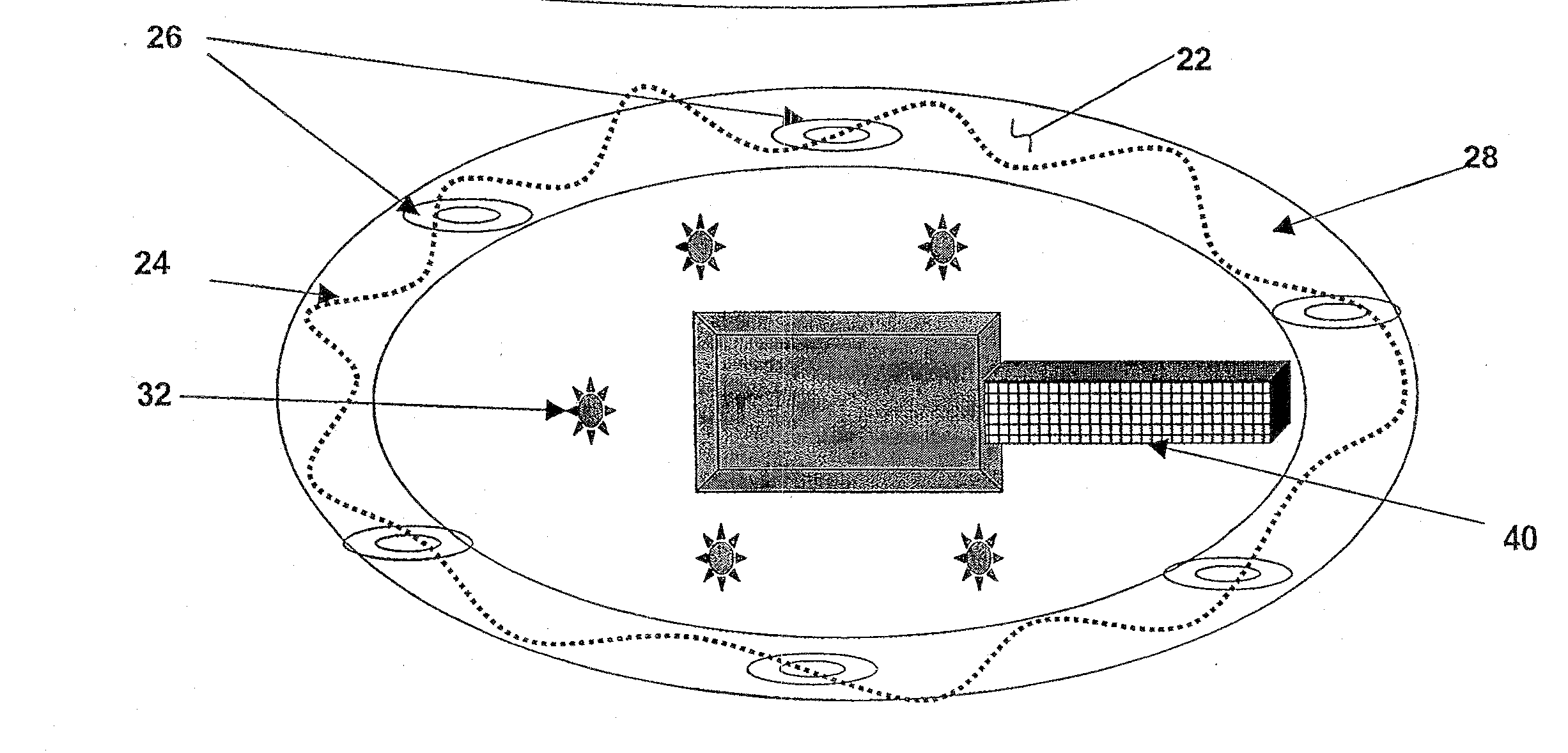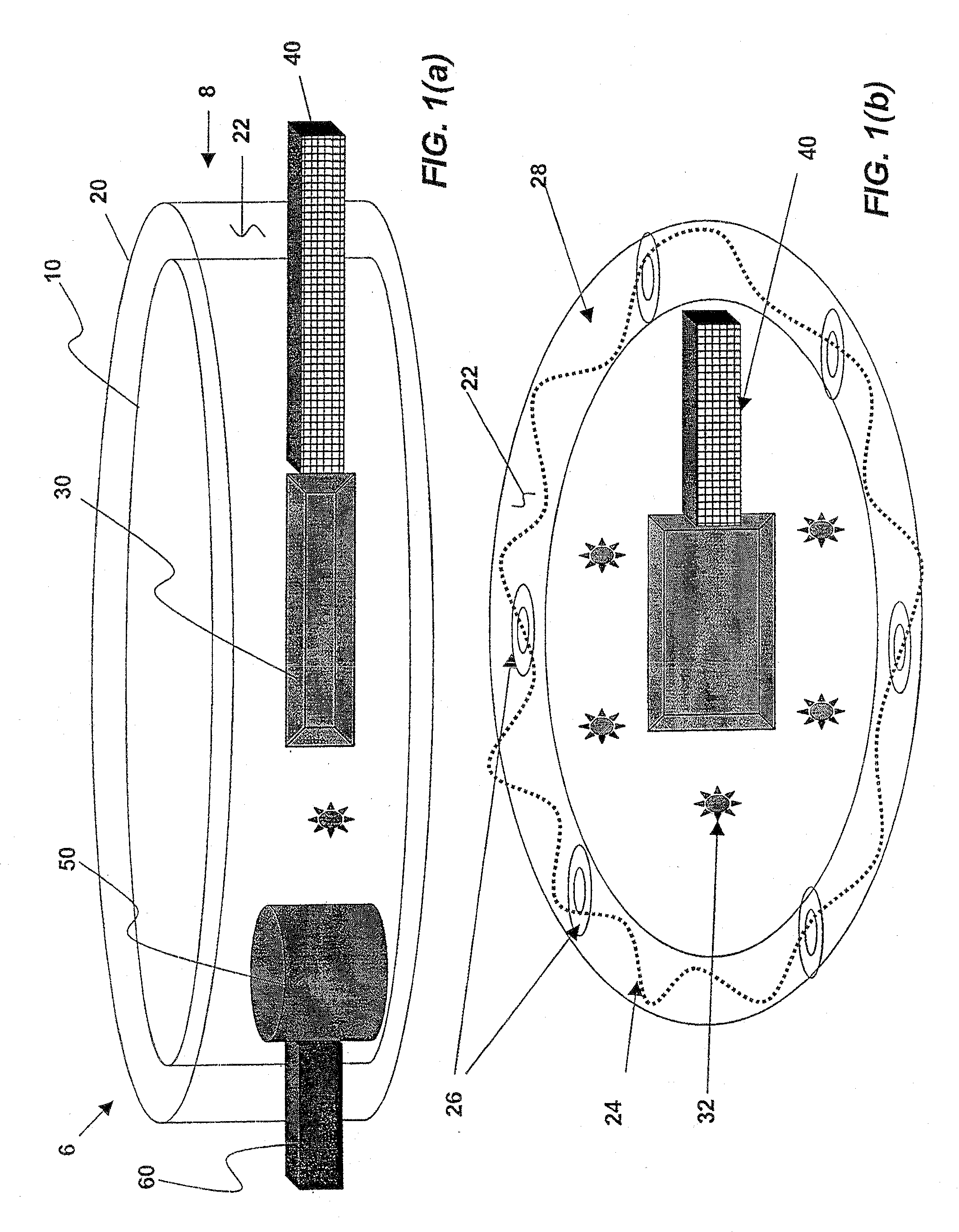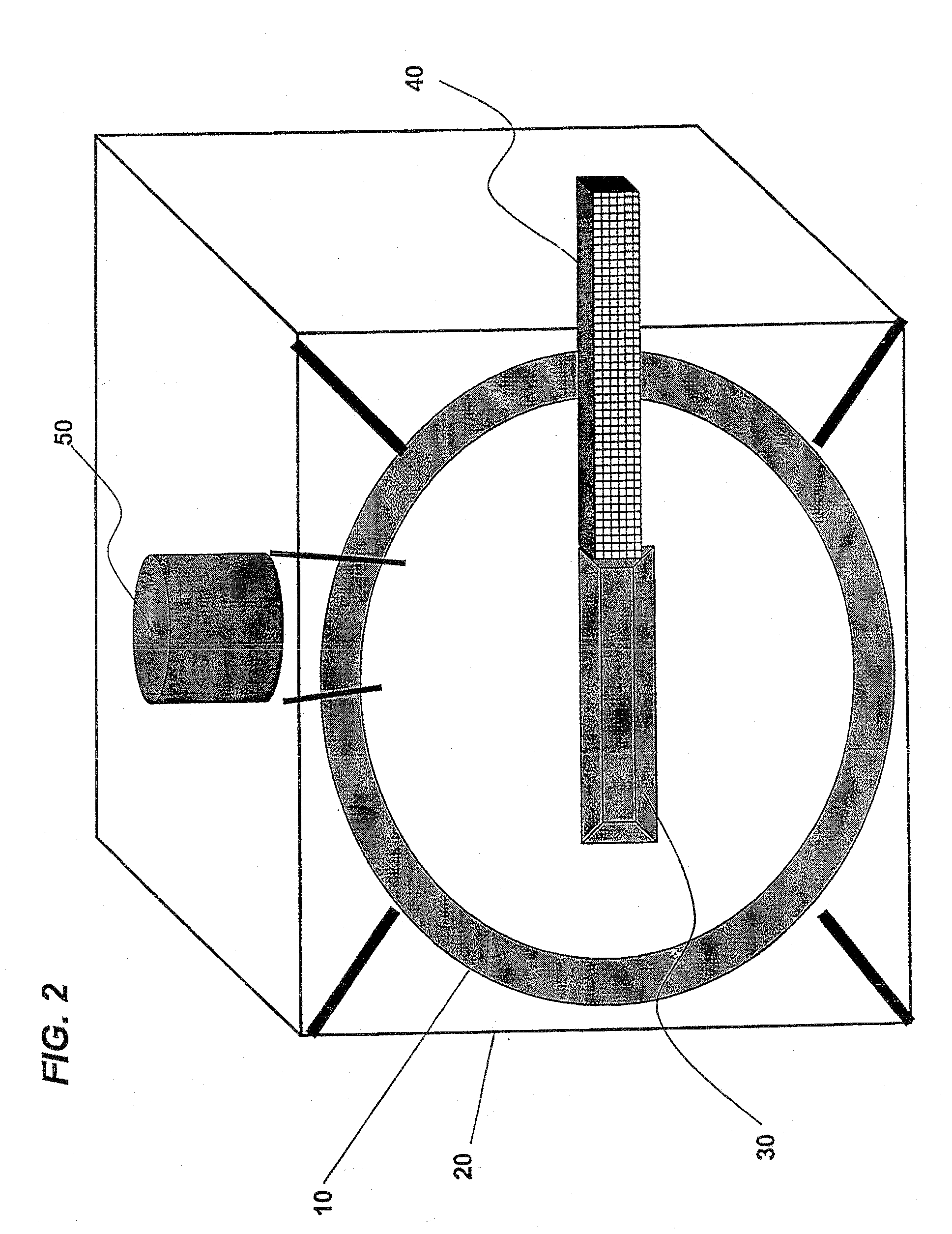Method and apparatus for the management of diabetes
a technology for diabetes and insulin delivery, applied in the field of diabetes management, can solve the problems of prone to human and/or technological errors, erroneous blood glucose level readings, and inability to accurately determine the amount of insulin to be delivered, so as to improve the specificity and sensitivity of measurement, improve the effect of endocrinologic/blood disorders and improve the treatment
- Summary
- Abstract
- Description
- Claims
- Application Information
AI Technical Summary
Benefits of technology
Problems solved by technology
Method used
Image
Examples
example one
[0073]A glucose-sensitive cell line may be established using pancreatic cells, or other engineered cell lines that respond to glucose levels. The cells may respond to glucose levels by initiating a series of events that would normally lead to insulin production in normal pancreatic cells. However, in this example, the cells chosen produce fluorescent proteins rather than insulin. The protein produces a fluorescent signal, the intensity of which is related to the glucose level in the blood exposed to the cells. An additional embodiment may allow for the natural production of insulin tagged with fluorescent protein to provide a physiologically-based measure of the amount of insulin that should be administered. In other words, the more fluorescent tagged insulin (or insulin substitute) the cells create, the more insulin that should be delivered to address the existing glucose levels. This may provide for enhanced specificity and sensitivity in determining a treatment (e.g., an amount o...
PUM
| Property | Measurement | Unit |
|---|---|---|
| energy | aaaaa | aaaaa |
| bio-chemical disorder | aaaaa | aaaaa |
| biochemical disorder | aaaaa | aaaaa |
Abstract
Description
Claims
Application Information
 Login to View More
Login to View More - R&D
- Intellectual Property
- Life Sciences
- Materials
- Tech Scout
- Unparalleled Data Quality
- Higher Quality Content
- 60% Fewer Hallucinations
Browse by: Latest US Patents, China's latest patents, Technical Efficacy Thesaurus, Application Domain, Technology Topic, Popular Technical Reports.
© 2025 PatSnap. All rights reserved.Legal|Privacy policy|Modern Slavery Act Transparency Statement|Sitemap|About US| Contact US: help@patsnap.com



